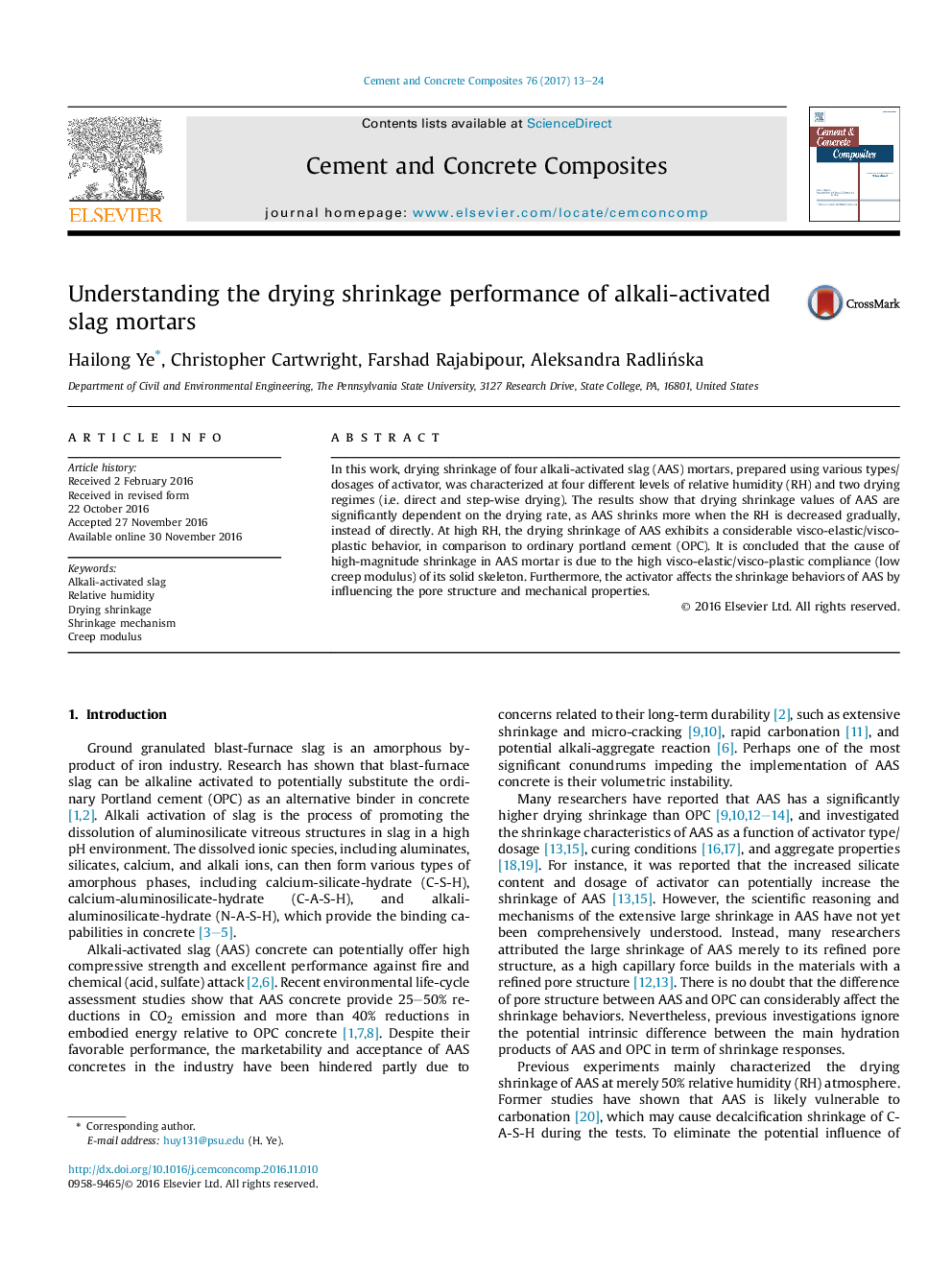| Article ID | Journal | Published Year | Pages | File Type |
|---|---|---|---|---|
| 5436938 | Cement and Concrete Composites | 2017 | 12 Pages |
In this work, drying shrinkage of four alkali-activated slag (AAS) mortars, prepared using various types/dosages of activator, was characterized at four different levels of relative humidity (RH) and two drying regimes (i.e. direct and step-wise drying). The results show that drying shrinkage values of AAS are significantly dependent on the drying rate, as AAS shrinks more when the RH is decreased gradually, instead of directly. At high RH, the drying shrinkage of AAS exhibits a considerable visco-elastic/visco-plastic behavior, in comparison to ordinary portland cement (OPC). It is concluded that the cause of high-magnitude shrinkage in AAS mortar is due to the high visco-elastic/visco-plastic compliance (low creep modulus) of its solid skeleton. Furthermore, the activator affects the shrinkage behaviors of AAS by influencing the pore structure and mechanical properties.
